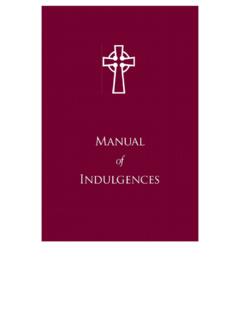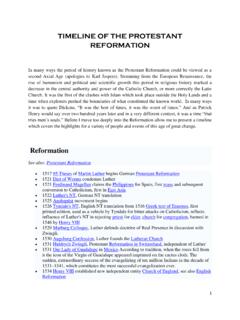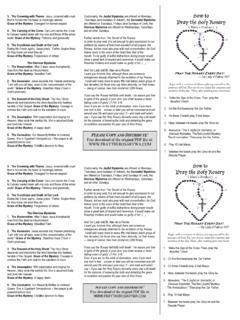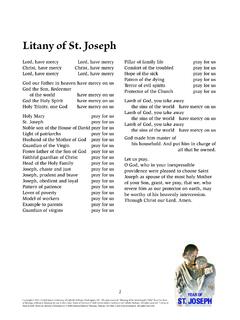Transcription of The Rise of New Monarchies in Spain, France, and England ...
1 The Rise of New Monarchies in Spain, France, and England , and the Decline of the Italian City-States _____ As we have seen, between 1450 and 1550, Renaissance humanism reshaped European education, literature, the arts, music, and political theory. It also exposed corruption and fallacies within the Roman Catholic Church. It was a profound rejection of medieval scholasticism and traditional practices. In the arena of government, a similar trend was evident. In Spain, France, and England , monarchs were demolishing the medieval feudal political system and building strong central government in its place.
2 As these three kingdoms rose to power and prominence, the wealth, influence, and power of the Italian city states declined. SPAIN FRANCE ITALIAN CITY STATES England The Medieval Feudal Political System During the medieval feudal system, the power of monarchs was limited by the nobility and the Church. The feudal arrangement between medieval kings and their nobility was as follows. The king bestowed land (called a fief ) and tax-exempt status on noble families. In return, that noble family pledged its loyalty to the king and his successors, and promised to provide military assistance (in the form of mounted knights and foot soldiers) in time of war.
3 Feudalism was a symbiotic arrangement ( it was mutually beneficial). However, with limited ability to tax and no standing army, medieval kings were rather politically weak. They constantly worried about powerful nobles throwing their support behind rival claimants to the throne. If a noble rebellion did break out, it was a serious problem. Nobles typically lived in large stone castles which had been built with defense in mind. Their walls were usually many feet thick, and were pierced by narrow slit windows from which archers could pick off attackers without being exposed to enemy fire.
4 In addition, the castle was often surrounded by a moat and was accessible only by a drawbridge which could be quickly raised. Castles also had their own internal water supply. Thus, the only way for a king to bring a rebellious noble to heel was to lay siege to his castle. A siege could take many months and there was no guarantee of success. A king had to think carefully about beginning a siege, because to fail would weaken his power even further. The weakness of medieval kings meant that, beyond the capital cities, kingdoms were rather loosely governed.
5 The Roman Catholic Church, which had enormous influence over the population, limited the power of medieval monarchs in three major ways. 1. The Church was the single largest landowner in every European country. Dioceses, monasteries, and convents owned vast landed estates and enjoyed tax-exempt status. The monarch was limited to taxing peasants who rented land from the Church. According to medieval tax laws, such property did not actually belong to the Church but, rather, belonged to God, and the revenues generated were used to support clergy, charity, education, and church buildings in other words, to do God s work.
6 The government had no authority to tax God! In addition to its tax exempt status the Church had the authority to collect an annual tithe from all landowners in the kingdom. The tithe was 10% of the value of the produce of the land. While medieval kings were chronically short of cash and couldn t afford to keep standing armies, the Church possessed much wealth frustratingly beyond their reach. 2. The Church operated its own ecclesiastical courts outside the jurisdiction of royal courts.
7 Essentially, this meant that if a bishop, priest, monk, or nun committed a crime, they could not be tried in the king s court. Instead, trial and punishment would be handled internally by the Church itself it its own ecclesiastical court. The reasoning behind this was that secular governments had no right to judge God s representatives on earth. 3. If a monarch challenged the authority of the Church, the Pope could threaten him with excommunication. This meant that he would be temporarily excluded from receiving the sacraments until he resolved his dispute with the Church.
8 During his period of excommunication, his membership in the Church was suspended, and the clergy preached that he no longer enjoyed God s favor. If he should die during this period, he could not enter heaven. Excommunication was a powerful weapon that undermined the king s status among the nobility and commoners. If a king still defied the Church, the Pope could pull out an even more powerful weapon Interdict. This suspended the administering of sacraments in the entire kingdom until the king s excommunication was lifted.
9 This meant no baptisms, marriages, or funerals for the entire population! Clearly, it was not in the best interest of the monarch to pick a fight with the Church. The weakening of the Nobility and Church during the 14th Century Crises The Black Death which hit Europe repeatedly from the mid-14th century onwards seriously weakened the Church and nobility. The Church s inability to explain the plague or to protect the population undermined its influence. The Black Death also ruined the finances of many noble families as millions of rent-paying peasants died.
10 In the ensuing labor shortage, nobles had to compete to rent land to surviving peasants who were able to sign long-term leases on favorable terms. Nobles who weren t able to rent out land had few ways of earning money, and many went bankrupt. The Avignon Papacy and the Great Schism did irreparable damage to the Church. As we have studied earlier in this unit, between 1309 and 1377 the Roman Catholic Church was based in Avignon, France. Losing control of much of the Papal States in central Italy eliminated a huge source of Church revenue.










